-
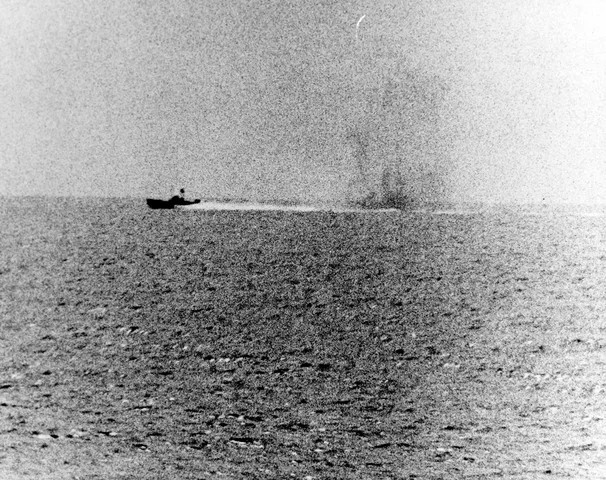 The Gulf of Tonkin incident involved alleged attacks on US destroyers by North Vietnamese torpedo boats in August 1964. The second, disputed attack prompted Congress to pass the Gulf of Tonkin Resolution, authorizing President Lyndon B. Johnson to escalate US involvement in the Vietnam War without a formal declaration of war. It was later revealed that the second attack likely never occurred, making the resolution a controversial and pivotal point in American foreign policy.
The Gulf of Tonkin incident involved alleged attacks on US destroyers by North Vietnamese torpedo boats in August 1964. The second, disputed attack prompted Congress to pass the Gulf of Tonkin Resolution, authorizing President Lyndon B. Johnson to escalate US involvement in the Vietnam War without a formal declaration of war. It was later revealed that the second attack likely never occurred, making the resolution a controversial and pivotal point in American foreign policy. -
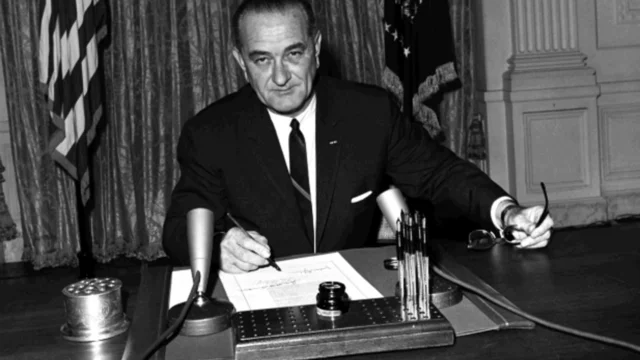 The Gulf of Tonkin Resolution, passed in August 1964, gave President Lyndon B. Johnson the authority to use military force in Southeast Asia without a formal declaration of war. Congress granted this power after the administration claimed North Vietnamese forces had attacked two U.S. destroyers in the Gulf of Tonkin, which the resolution used as justification to escalate U.S. military involvement in Vietnam. This effectively launched the United States into a larger state of conflict.
The Gulf of Tonkin Resolution, passed in August 1964, gave President Lyndon B. Johnson the authority to use military force in Southeast Asia without a formal declaration of war. Congress granted this power after the administration claimed North Vietnamese forces had attacked two U.S. destroyers in the Gulf of Tonkin, which the resolution used as justification to escalate U.S. military involvement in Vietnam. This effectively launched the United States into a larger state of conflict. -
Operation Rolling Thunder was a sustained bombing campaign by the U.S. Air Force and Navy against North Vietnam from 1965 to 1968. The primary goals were to weaken North Vietnam's ability to support the communist insurgency in the South, interdict supply lines, and improve South Vietnamese morale. The bombing was marked by strict limitations on targets, which hampered its effectiveness in forcing negotiations or a military victory.
-
 On January 31, 1968, a squad of Viet Cong's attacked the U.S. Embassy in Saigon, breaching the compound wall during the Tet Offensive. While they failed to enter the main chancery building, the attackers fought on the grounds for several hours before all of them were killed or captured. This attack, though a military failure for the attackers, had a profound psychological and political impact, shaking American confidence in the war effort.
On January 31, 1968, a squad of Viet Cong's attacked the U.S. Embassy in Saigon, breaching the compound wall during the Tet Offensive. While they failed to enter the main chancery building, the attackers fought on the grounds for several hours before all of them were killed or captured. This attack, though a military failure for the attackers, had a profound psychological and political impact, shaking American confidence in the war effort. -
 On March 16, 1968, a company of American soldiers brutally murdered between 347 and 504 unarmed South Vietnamese civilians, including women, children, and old men, in the hamlet of My Lai during a search and destroy mission. U.S. Army officers initially covered up the horrific incident, which included acts of rape and mutilation, for over a year. When investigative journalists finally reported the massacre to the public in November 1969, it sparked an outrage in the U.S.
On March 16, 1968, a company of American soldiers brutally murdered between 347 and 504 unarmed South Vietnamese civilians, including women, children, and old men, in the hamlet of My Lai during a search and destroy mission. U.S. Army officers initially covered up the horrific incident, which included acts of rape and mutilation, for over a year. When investigative journalists finally reported the massacre to the public in November 1969, it sparked an outrage in the U.S. -
In January 1968, North Vietnamese and Viet Cong forces launched the Tet Offensive, a massive series of surprise attacks on over 100 cities and outposts across South Vietnam during the Vietnamese New Year holiday. Although U.S. and South Vietnamese troops inflicted heavy casualties and achieved a tactical military victory by repelling the attacks. The offensive proved to be a strategic political defeat for the United States.
-
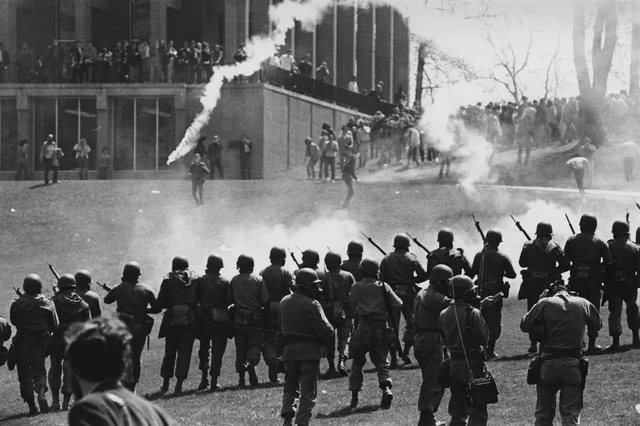 On May 4, 1970, the Ohio National Guard opened fire on unarmed students at Kent State University who were protesting the expansion of the Vietnam War into Cambodia. The guardsmen fired 67 rounds over 13 seconds, killing four students and wounding nine others, one of whom was permanently paralyzed. The tragedy sparked national outrage, leading to the largest student strike in U.S. history and deepening divisions across the country regarding the war and government power.
On May 4, 1970, the Ohio National Guard opened fire on unarmed students at Kent State University who were protesting the expansion of the Vietnam War into Cambodia. The guardsmen fired 67 rounds over 13 seconds, killing four students and wounding nine others, one of whom was permanently paralyzed. The tragedy sparked national outrage, leading to the largest student strike in U.S. history and deepening divisions across the country regarding the war and government power. -
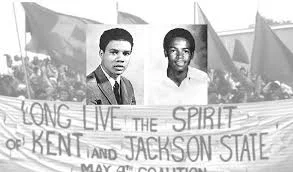 On May 15, 1970, police fired on students at Jackson State College, killing two young men, Phillip Gibbs and James Earl Green. The shooting occurred during protests against the Vietnam War and followed a period of rising racial tensions on campus. Despite evidence of excessive force and eyewitness accounts contradicting the police's sniper claim, no officers were prosecuted, and a civil lawsuit was unsuccessful.
On May 15, 1970, police fired on students at Jackson State College, killing two young men, Phillip Gibbs and James Earl Green. The shooting occurred during protests against the Vietnam War and followed a period of rising racial tensions on campus. Despite evidence of excessive force and eyewitness accounts contradicting the police's sniper claim, no officers were prosecuted, and a civil lawsuit was unsuccessful. -
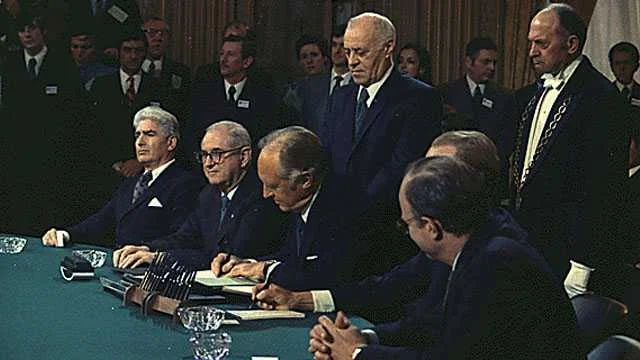 The Paris Peace Accords, signed in January 1973, ended the Vietnam War by ceasing U.S. military involvement, with a ceasefire and the withdrawal of all American troops within 60 days. The agreement also called for the release of all prisoners of war and the Vietnamese armies to hold their current positions. Although it achieved a temporary peace and ended U.S. involvement, North Vietnam ultimately overran South Vietnam in 1975, making the accords a failure to permanently end the conflict.
The Paris Peace Accords, signed in January 1973, ended the Vietnam War by ceasing U.S. military involvement, with a ceasefire and the withdrawal of all American troops within 60 days. The agreement also called for the release of all prisoners of war and the Vietnamese armies to hold their current positions. Although it achieved a temporary peace and ended U.S. involvement, North Vietnam ultimately overran South Vietnam in 1975, making the accords a failure to permanently end the conflict. -
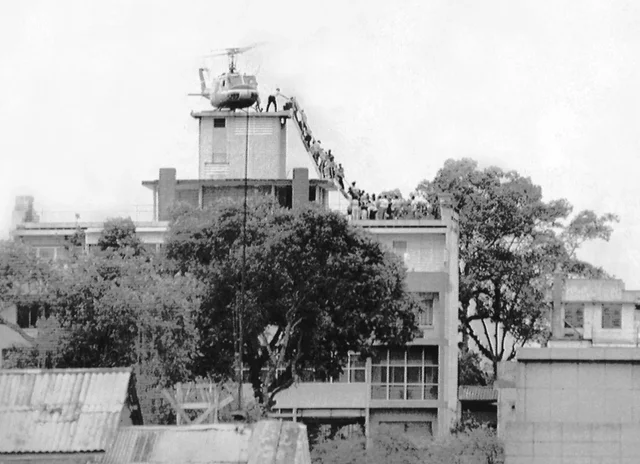 The fall of Saigon on April 30, 1975, was the final event of the Vietnam War, when North Vietnamese forces captured the capital of South Vietnam, leading to the country's reunification under communist rule. The event followed a rapid North Vietnamese offensive and a chaotic evacuation of American personnel and South Vietnamese civilians from the city. After the surrender, the city was renamed Ho Chi Minh City in honor of the late North Vietnamese leader.
The fall of Saigon on April 30, 1975, was the final event of the Vietnam War, when North Vietnamese forces captured the capital of South Vietnam, leading to the country's reunification under communist rule. The event followed a rapid North Vietnamese offensive and a chaotic evacuation of American personnel and South Vietnamese civilians from the city. After the surrender, the city was renamed Ho Chi Minh City in honor of the late North Vietnamese leader.